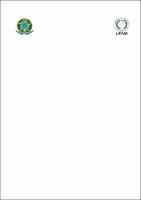| ???jsp.display-item.social.title??? |


|
Please use this identifier to cite or link to this item:
https://tede.ufam.edu.br/handle/tede/8885| ???metadata.dc.type???: | Tese |
| Title: | UX-MAPPER: a user experience method to analyze app store reviews |
| ???metadata.dc.creator???: | Nakamura, Walter Takashi  |
| ???metadata.dc.contributor.advisor1???: | Conte, Tayana Uchôa |
| First advisor-co: | Oliveira, Elaine Harada Teixeira de |
| Second Advisor-co: | Oliveira, Edson César Cunha de |
| ???metadata.dc.contributor.referee1???: | Steinmacher, Igor Fabio |
| ???metadata.dc.contributor.referee2???: | Wiese, Igor Scaliante |
| ???metadata.dc.contributor.referee3???: | Gasparini, Isabela |
| ???metadata.dc.contributor.referee4???: | Gadelha, Bruno Freitas |
| ???metadata.dc.description.resumo???: | User eXperience (UX) is a field that is increasingly attracting the interest of researchers in academia and practitioners in the industry. In a fierce competition scenario, companies seek to develop products that promote unique and satisfying experiences to have a competitive advantage over competitors. Thus, UX evaluations play an important role in developing and evolving interactive software products. However, more than just evaluating the UX, it is equally important to understand what factors affect their perceptions of their experiences. By doing so, practitioners could focus on factors that lead to positive UX while mitigating those that affect UX negatively, which could reduce costs and speed up the development process. However, conducting evaluations to identify these factors is costly as it requires highly trained personnel and many users to perform tasks. In this scenario, reviews from app stores emerged as an alternative to obtain valuable information on factors affecting UX and leading to positive or negative evaluations. This doctoral dissertation proposes an approach called UX-MAPPER (User eXperience Method to Analyze App Store Reviews) to support practitioners in the software development process by analyzing app store reviews to identify the factors leading to positive or negative UX. We followed Design Science Research (DSR), a methodology designed to develop artifacts through three well-defined cycles that ensure the research’s novelty, relevance, and rigor. We performed exploratory studies to investigate the problem and assess its relevance, a systematic mapping study to identify the factors that affect users’ perceptions about their experience with software applications, and an empirical study to determine the relevance and acceptance of our proposal from practitioners’ perspective. The results revealed a positive acceptance of UX-MAPPER. The participants were unanimous in affirming that it is useful for their jobs and that they would use it when it becomes available, highlighting our proposal’s usefulness and relevance for the software development and evolution process. |
| Abstract: | User eXperience (UX) is a field that is increasingly attracting the interest of researchers in academia and practitioners in the industry. In a fierce competition scenario, companies seek to develop products that promote unique and satisfying experiences to have a competitive advantage over competitors. Thus, UX evaluations play an important role in developing and evolving interactive software products. However, more than just evaluating the UX, it is equally important to understand what factors affect their perceptions of their experiences. By doing so, practitioners could focus on factors that lead to positive UX while mitigating those that affect UX negatively, which could reduce costs and speed up the development process. However, conducting evaluations to identify these factors is costly as it requires highly trained personnel and many users to perform tasks. In this scenario, reviews from app stores emerged as an alternative to obtain valuable information on factors affecting UX and leading to positive or negative evaluations. This doctoral dissertation proposes an approach called UX-MAPPER (User eXperience Method to Analyze App Store Reviews) to support practitioners in the software development process by analyzing app store reviews to identify the factors leading to positive or negative UX. We followed Design Science Research (DSR), a methodology designed to develop artifacts through three well-defined cycles that ensure the research’s novelty, relevance, and rigor. We performed exploratory studies to investigate the problem and assess its relevance, a systematic mapping study to identify the factors that affect users’ perceptions about their experience with software applications, and an empirical study to determine the relevance and acceptance of our proposal from practitioners’ perspective. The results revealed a positive acceptance of UX-MAPPER. The participants were unanimous in affirming that it is useful for their jobs and that they would use it when it becomes available, highlighting our proposal’s usefulness and relevance for the software development and evolution process. |
| Keywords: | UX-MAPPER Mobile app Automated strategies Software development Human-Computer Interaction |
| ???metadata.dc.subject.cnpq???: | CIÊNCIAS EXATAS E DA TERRA: CIÊNCIA DA COMPUTAÇÃO |
| ???metadata.dc.subject.user???: | User experience User reviews Influencing factors Machine learning App stores |
| Language: | eng |
| ???metadata.dc.publisher.country???: | Brasil |
| Publisher: | Universidade Federal do Amazonas |
| ???metadata.dc.publisher.initials???: | UFAM |
| ???metadata.dc.publisher.department???: | Instituto de Computação |
| ???metadata.dc.publisher.program???: | Programa de Pós-graduação em Informática |
| Citation: | NAKAMURA, Walter Takashi. UX-MAPPER: a user experience method to analyze app store reviews. 2022. 202 f. Tese (Doutorado em Informática) - Universidade Federal do Amazonas, Manaus, 2022. |
| ???metadata.dc.rights???: | Acesso Aberto |
| ???metadata.dc.rights.uri???: | http://creativecommons.org/licenses/by-nc-nd/4.0/ |
| URI: | https://tede.ufam.edu.br/handle/tede/8885 |
| Issue Date: | 13-May-2022 |
| Appears in Collections: | Doutorado em Informática |
Files in This Item:
| File | Description | Size | Format | |
|---|---|---|---|---|
| Tese_WalterNakamura_PPGI.pdf | Documento principal | 5.85 MB | Adobe PDF |  Download/Open Preview |
This item is licensed under a Creative Commons License





